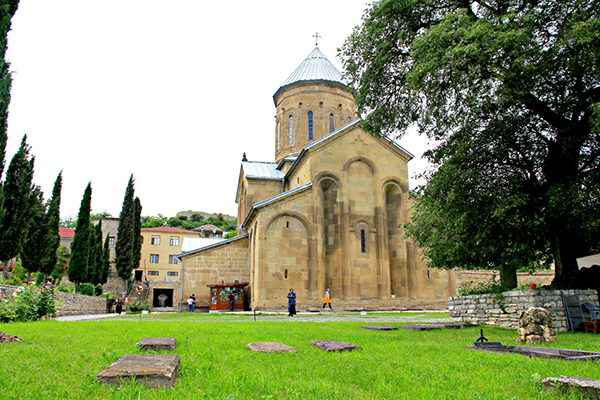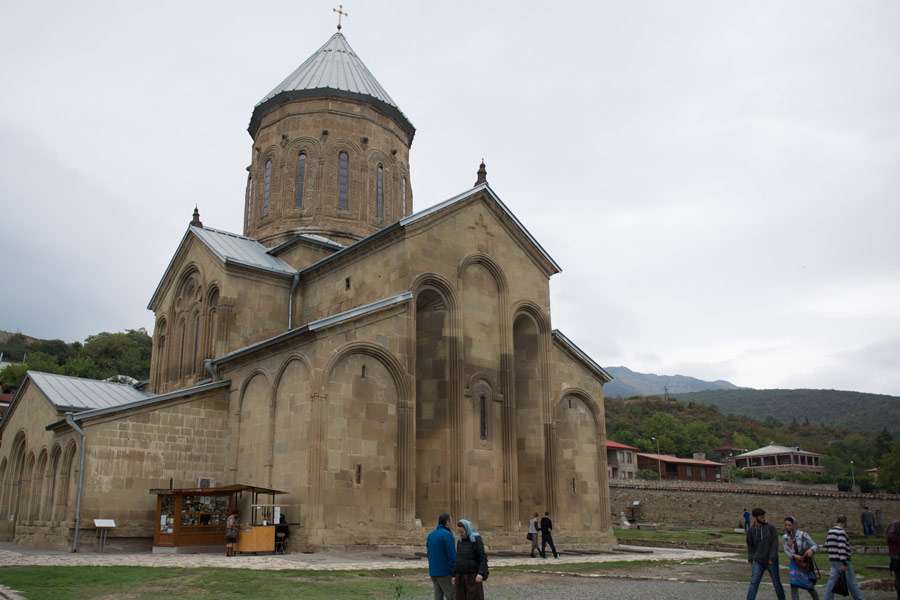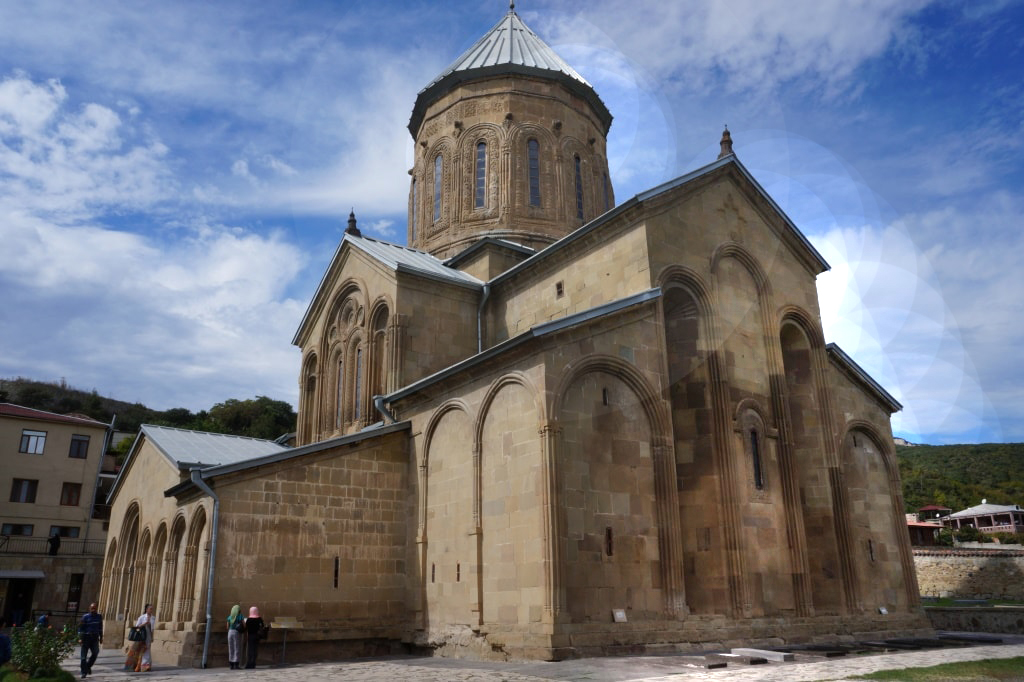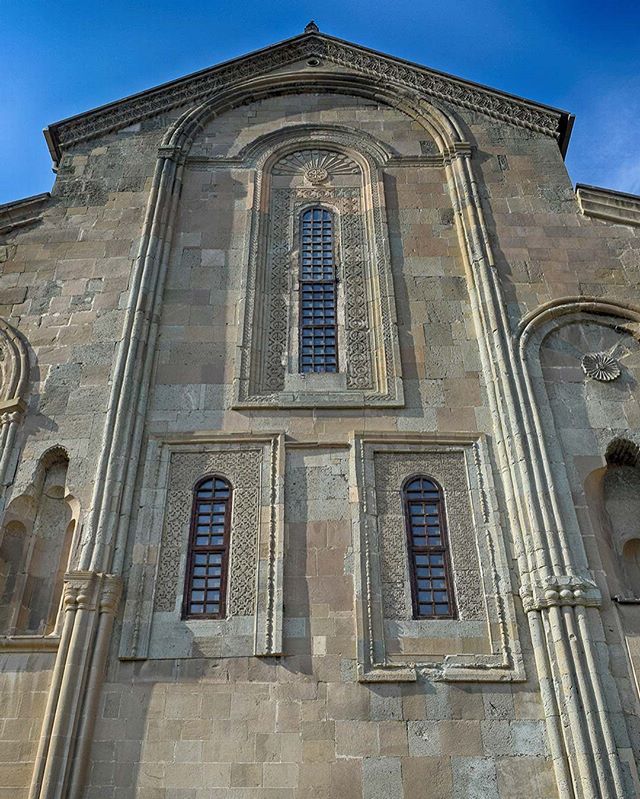Georgia has a great many monasteries and temples, and perhaps the most famous of them - Samtavro Monastery - is located in the ancient capital Mtskheta. This is one of the most revered places for Christians in Georgia. In the article we will talk more about this monastery complex and its history.
Where is?
Samtavro Monastery is located in a very beautiful place - at the confluence of the Aragvi and Mtkvari rivers. It is located in the northern part of the small town of Mtskheta, which, in turn, is located near Tbilisi. In old sources, this city was called the second Jerusalem because of the abundance of religious monuments. From Tbilisi you can get here by minibus or by train, which is less convenient.
From the history of the monastery

The conversion of Georgia to the Christian faith is connected with St. Nino of Cappadocia, equally apostolic. Equal-to-the-Apostles in Christianity are people who, like the twelve apostles, preached among pagan peoples, planting true faith. Saint Nino was one of those. Telling people about Christ, she reached the city of Mtskheta, which in ancient times was the capital of Georgia. There she lived for some time with the tsar’s gardener, and later arranged a hut for herself under a blackberry bush on the northern outskirts of the city, and lived there. In the future, Tsar Mirian III and his wife, Tsarina Nana will build a temple of St. Nino on this site, otherwise - Makvlovani (translated from Georgian - “bramble”). It was during these rulers that Georgia became a Christian power - this happened in 324. Tsar Mirian built this temple after, according to legend, he visited the first Georgian cathedral - Svetitskhoveli. There he realized that he was too sinful to visit this beautiful holy place, and decided to create another temple, simpler. According to the annals, the temple was built with the participation of all the people for four years, from which we can conclude that the church was large-scale. Subsequently, the king and queen were buried in this church, which thus became the royal tomb. Since then, this place began to be called the Samtavro temple - in translation from Georgian “royal place”.

Later, another church was built near him, Preobrazhenskaya, which became a cathedral, as it was much larger, respectively, accommodating a larger number of people.
Further history of the temple
Samtavro Temple was not lucky - it was destroyed more than once, and then restored again. He suffered during several earthquakes, from the attack of the forces of Tamerlane. He formed his more or less close to the modern look in the 14-15 centuries.
At the beginning of the XI century, by the decree of the then Catholicos - the Patriarch of All Georgia Melchizedek - the temple was significantly increased. In addition, the southern gate was attached to it and decorated with an ornament that has no analogues in Georgia. In principle, the temple existed most of the time thanks to donations, and since it was the most revered holy place in all of Georgia, the temple flourished and was quite wealthy.

Samtavro Convent was founded in the 19th century by the Russian administration. A big role in its formation was played by the namesake of St. Nino - Nino Amilahvari, abbess of the monastery. She restored the temple and founded a women's spiritual school. According to contemporaries, it was a quality educational institution, and the girls who came out of it in the future became good mothers and educated women. Subsequently, the school was transferred from Samtavro Monastery to the city of Tbilisi. The monastery itself was closed at the time of the establishment of Soviet power in Georgia.
Now the monastery is operating, and about forty novices live in it, who are already on their feet at four in the morning and begin to read the prayers.
What to see in the Samtavro monastery?
Now the monastery complex includes preserved buildings, such as the Transfiguration Church and the Church of St. Nino - the same "bramble". Both temples are typical examples of cross-domed architecture - the basis of the structure is an imaginary cross. Georgian churches are, in principle, exemplary buildings of this kind. The Transfiguration Church, as already mentioned, is larger, in addition, it is finer and more elegantly decorated. But on the whole, both temples are distinguished by strict forms and the absence of decorative excesses.

In addition, among other buildings of the Samtavro monastery in Mtskheta in Georgia, you can see the tower of the Mongol era, which, apparently, was built at the very end of the 13th century. A similar tower can be found in the city of Vardzia. The fortified tower, numerous frescoes dating from the 12th century are still preserved. In several gates of the monastery, oriented to different parts of the world, you can find churches - in the southern gates is the church of the Archangel Michael, in the north - the churches of John the Baptist and John Chrysostom.
However, usually the architectural features of temples and towers do not cause much interest among tourists (as well as tour guides), because they are not associated with any interesting stories that primarily attract visitors. However, they come here not for the sake of architecture and the beauties of nature. The main wealth of the Samtavro monastery is its shrine, and first of all, it is a place of pilgrimage.
Monastery Shrines
In Samtavro Monastery in Georgia there are several relics revered by the Christian world, such as the Iveron Icon of the Mother of God, the relics of Tsarina Nana and King Mirian, who made Georgia a Christian country, an element of stone from the grave of St. Nino, a miraculous icon with her image donated to the monastery by one of the Georgian kings . In addition, in the churches of the monastery there are relics of Shio Mgvimsky, a Georgian saint, and the grave of one of the ascetics of modern Georgia - Elder Gabriel.
Necropolis
There is a cemetery on the territory of the monastery, where mostly nuns and abbess are buried. Saint Gabriel was buried there a few years ago, but he will be discussed later.
In the 19th century, between the monastery and the tract, an ancient burial ground was discovered, the lower tier of which dates back to the beginning of the Iron Age, and the upper one includes the era of the birth of Christianity. In particular, coins were found there during the reign of Emperor Augustus. Modern Caucasians are not descendants of those whose skulls were found in the burial ground: they belong to dolichocephals.
Holy ascetic
How is the history of Samtavro monastery and Rev. Gabriel related? The man, now known by this name, was born in Tbilisi in 1929. In the world, his name was Goderdzi Vasilievich Urgebadze. From childhood, he believed in Christ and then began to fool around. He even managed to attend church and fast in the army, and after he served, he was recognized as mentally unhealthy. In the courtyard of his parents' house in Tbilisi, he built a church with his own hands, which he restored several times because of the destruction - it still exists today.
In 1955, Urgebadze received monastic tonsure under the name of Gabriel, and in 1965 he publicly burned a portrait of Lenin at a demonstration, for which he was severely beaten and almost sentenced to death. However, the sentence was canceled due to a diagnosis of mental ill-health.
For almost twenty years, St. Gabriel wandered around the churches destroyed by the communist regime, and in 1971 he became rector of the Samtavro monastery. Gabriel was widely known in Georgia, was revered and had a reputation as a holy elder. He was perspicacious, he was considered a miracle worker.
In the last years of his life, the saint was seriously ill with dropsy and lived almost hopelessly in the tower of the Samtavro monastery in Mtskheta. After death, his grave immediately became an object of pilgrimage, as during life, a large number of people visited the old man. In 2012, Abbot Gabriel was canonized as a saint - this is the so-called kinotypic holiness, when a monk in his life tries to imitate Christ and lead a righteous life as much as possible.
Imperishable relics
In 2014, it was discovered that the relics of the old man remained incorrupt. The body of St. Gabriel was solemnly transferred to the main cathedral of the country of Svetitskhoveli, and then back to Mtskheta. In autumn 2015, a special stone building was built for the crayfish with relics, which was made from Iranian onyx, in the northwestern part of the Samtavro temple.